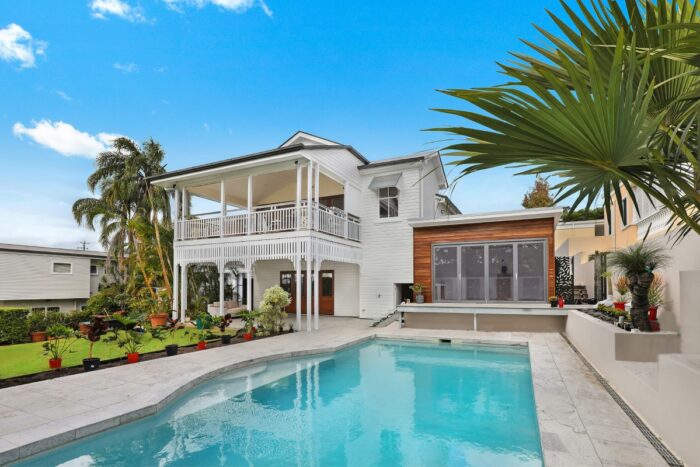Insights
How to calculate rental yield on a rental property
Published
04 April, 2024

Buying a rental property is an exciting investment. You’re purchasing a bricks and mortar investment—something you can touch and feel. And you’re also in line for generating yield from the property’s rental income. You just need to calculate what that yield is.
A yield is the percentage of income you’ll receive on an investment, relative to the overall value of your investment. In real estate, we call it a rental yield, because the income is of course derived from the property’s tenant.
Why is calculating rental yield important?
Calculating the rental yield is crucial for understanding the difference in annual return between two or more potential investments.
No two rental properties are the same. And this is the precise reason we use a percentage value: every property has its own merits and pitfalls, and simply knowing the dollar-value of income that each will provide is not enough to determine whether one is better than another.
For example: One property is providing a rental income of $20,000 per year; the other, $30,000 per year. If you assume the latter is the better investment, you’re a brave investor. Because you haven’t factored in how much the property will cost you upfront, nor have you understood the costs involved in owning it.
The two type of rental yields

There are two types of rental yields:
- Gross Rental Yield: The simplest yield calculation, using only the property value and its projected annual income.
- Net Rental Yield: A more advanced calculation of the above, taking into account the property’s annual expenses.
Both yield types have their merits and both have their specific uses. If you’re serious about buying an investment property, you’ll want to know how to calculate both.
Calculating gross rental yield
The gross rental yield gives you a quick snapshot of the property’s potential for generating income, and simply uses the annual income and the property value.
The formula for calculating a rental property’s gross rental yield is below:
Gross Rental Yield = Annual Rental Income / Property Value x 100
Example:
You’re looking at buying a property with a price tag of $800,000. The realtor has indicated a likely rental income of $600 per week, which adds up to $31,200 per year.
Gross Rental Yield = $31,200 / $800,000 x 100
Gross Rental Yield = 3.90% p.a.
Why is gross rental yield important?
With the gross rental yield in your pocket, you’ll now know at a quick glance how the property will stack up as an investment against, say, a term deposit, an investment in an unlisted property trust or of course another residential property. You can calculate the gross yield at a glance, potentially without even contacting the realtor.
The gross rental yield will project a far prettier number than your net rental yield. Why? Because it doesn’t include all the costs associated with your rental property, which will erode your annual income.
Calculating net rental yield
The simple calculation we did above can be advanced slightly to get you your net rental yield. This will require a lot more information but is a far truer reflection of the property’s annual cash flow.
The formula for calculating a rental property’s net rental yield is below:
Net Rental Yield = (Annual Rental Income—Operating Expenses) / Property Value x 100
It’s the first time we’ve mentioned operating expenses, which are the costs of owning the subject property.
Here are some examples of operating expenses*:
- Property taxes
- Council rates
- Repairs and maintenance costs
- Property management fees
- Water rates
- Advertising costs (for a new tenant)
- Mortgage costs
*Upfront costs, like stamp duty, aren’t typically included in a net yield calculation because they are once-off payments.
You might not know every expense dollar-for-dollar (because, for example, you won’t know what specific repairs you’ll need each year). But wise property investors will at least account for potential costs by either using a buffer or relying on their own investment nous.

Example:
You’ve found some additional information about the potential property we mentioned earlier. Alongside its $800,000 purchase price, you’re expecting total annual costs of $10,500 (the property is in good shape, and you think it’ll only need a maximum of $2,000 in repairs each year).
Net Rental Yield = ($31,200—$10,500) / $800,000 x 100
Net Rental Yield = 2.59% p.a.
Why is net rental yield important?
The net rental yield is a far more accurate measure of your property’s annual cash flow. It might be less appealing than the gross yield, but—if using accurate figures—it’ll provide far more confidence in what the future has in store for you financially.
You’ll use net rental yield when comparing a range of similar investments in order to see which will provide a better cash flow. Of course, you’ll do so when comparing two or more residential properties. And if the net rental yield is superior to the other investments’ gross yields, then you’ll know you’re potentially on to a winner.
Discovering the net rental yield also helps with forecasting your future cash flow. You might have financial goals or life plans that rely on receiving a certain amount of passive income throughout each year. The net rental yield of your prospective rental property will fit nicely into that forecasting, because you’ll comfortably have the knowledge of your specific income—net of all outgoings.
Investing in high-yielding real estate
It’s not easy finding a profitable investment. That’s because so much of your capital goes towards the initial purchase, while the costs of leveraging the purchase can often outweigh the income it provides.
That’s why so many Australian investors are looking toward real estate syndicates for their next residential investment.
Investing in a syndicate—also known as an unlisted property trust—means you don’t need to worry about finding the property yourself, because property experts, with decades of experience, are on the hunt for you. You’ll pool your funds with other like minded investors, and will often secure properties with far higher price tags than you’ll otherwise be able to do on your own.
And lastly, it’s not just yield you can expect. But capital growth, too. A good property investment company will ensure solid cash flow and also grow your capital investment through proven value-add techniques.
Want more information on how you can invest in one of our property syndicates? Then get in touch with us today.



